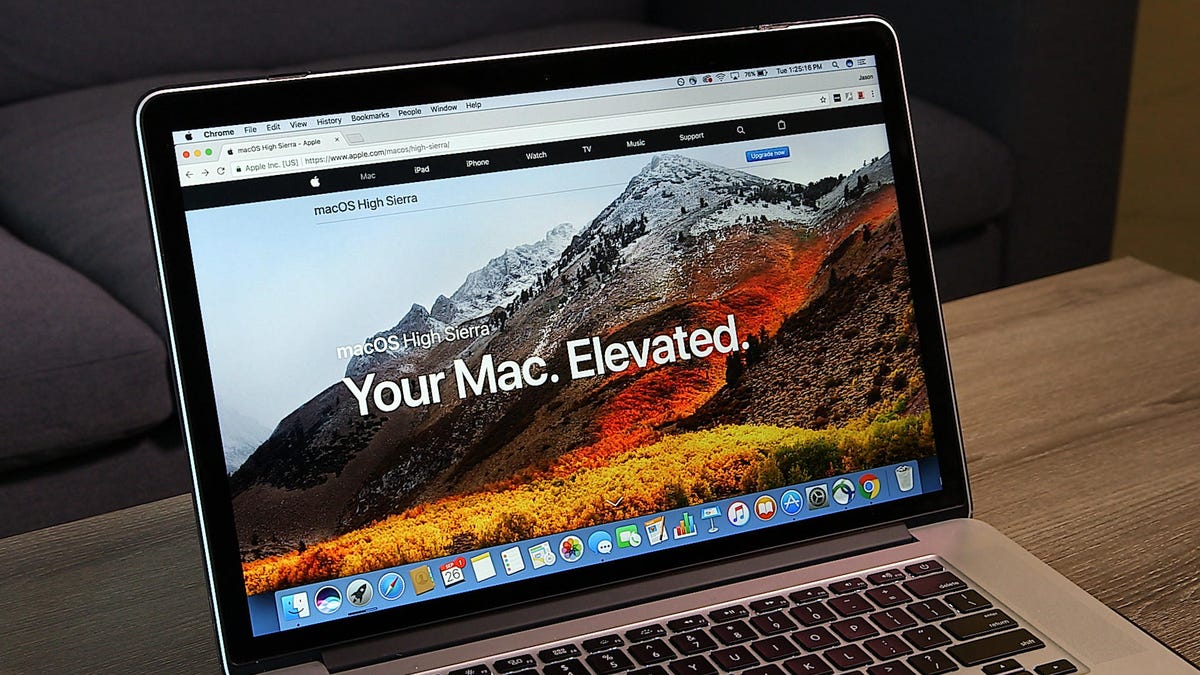5 hidden MacOS High Sierra features you need to know
Don't overlook these useful features of your Mac.

A revolutionary update, MacOS High Sierra was not. Instead of a massive design overhaul, it focused on a number of under-the-hood changes, namely Apple File System (APFS) for better performance and security, HVEC for improved video compression and Metal 2 for more powerful graphics.
High Sierra did, however, introduce some tangible changes to your Mac. In addition to offering improvements the apps you use most, it contains a few other features that you may have missed. Here are five features of MacOS High Sierra that are worth knowing.
1. Lock screen shortcut
MacOS High Sierra added a Lock Screen option to the Apple menu that's an incredibly convenient way to lock your Mac when you need to get up and walk away from it for a few minutes. Just hit the Apple icon in the top-left corner and click Lock Screen or use the keyboard shortcut Command-Control-Q. Your Mac will lock and require your password to unlock -- or Touch ID if you've got the Touch Bar MacBook Pro .
2. iCloud Family Sharing
When iCloud Family Sharing was introduced years ago, it let you share only purchases from the App Store, iTunes and iBooks along with syncing calendars and reminders. Now, iCloud Drive gets in on the Family Sharing action and lets you share cloud space for files, photos, backups and more.
You can spring for a single iCloud storage plan to be shared with up to six family members instead of paying for individual plans. Only the two largest iCloud plans are shareable, the 200GB plan for $2.99 (£2.49 or AU$4.49) a month or the 2TB plan for $9.99 (£6.99 or AU$14.99) a month. To set up family sharing on a Mac, go to System Preferences > iCloud and click the Set Up Family button.
3. Photos app selection counter
The Photos app added a little counter in the top-right corner that appears when you start selecting photos. It shows a tiny thumbnail of the first photo you selected along with a running count of your selected photos as you go, and it's more than just a counter. You can drag the tiny thumbnail to your desktop to export the photos, which is by far the quickest and easiest way to export photos from the Photos app. (I've always found it annoying that there's no keyboard shortcut to export photos.) You can also drag that tiny thumbnail to an album in the left panel to add your selected photos to that album.
4. Photos plays nice with other editors
I find that the Photos app suffices for my admittedly modest photo-editing needs, but the app now plays nice with other photo-editing apps. The best part is the photo stays right in its spot in the Photos app, and any edits you make in the other app are immediately synced. It's really slick. Just right-click on a photo or a selection of photos and choose Edit With and then choose your app. Any edits will appear in Photos, and you can always undo them from Photos by clicking Edit and then choosing Revert to Original.
5. Support for VR
This last one is on the "hidden" list because it's still a little forward looking for most Mac users. MacOS High Sierra support VR, but only if your hardware is up the task. Unless you've got the insanely expensive iMac Pro or the top-of-the-line 27-inch iMac with Retina 5K Display (the one with AMD Radeon Pro 580 graphics), then you'll need to wait a bit longer. For any Mac with a Thunderbolt 3 port, you'll be able to supercharge your Mac's graphics with an external GPU, which is expected to be ready this spring.

